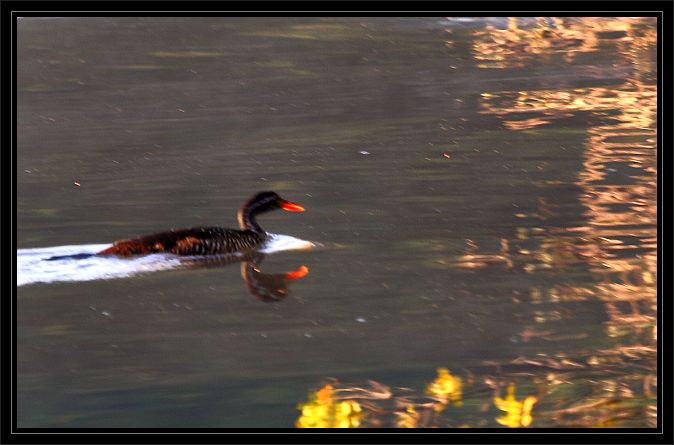Northern Black Korhaan
Posted: Wed Dec 19, 2012 9:44 pm
239. Northern Black Korhaan Afrotis afraoides (Witvlerkkorhaan)
ORDER OTIDIFORMES. Family: Otitidae
Description
Length 50 cm, weight 500-952 g, males slightly larger than females. In flight the white primary 'windows' are diagnostic, but on ground difficult to separate from Southern Black Korhaan.
Adult male: Head black, apart from white cheek patch and brown crown, finely barred and edged white. White collar across mantle extends onto sides of upper breast; remainder of upper parts barred buff-brown and black (bars of equal width). Greater, median and outer lesser coverts white, forming conspicuous edge to folded wing; in flight, together with white bases to primaries, form conspicuous bar across wing. Secondaries blackish. Underwing blackish, primaries with prominent white bases. Neck and underparts black. Bill coral-red, with grey tip and pale horn subterminal bar. Eyes brown; eye ring red. Legs bright yellow.
Adult female: As adult male, but head, neck and breast buff-brown, crown and neck barred black. Lacks white mantle collar. Black of underparts confined to belly.
Juvenile: As adult female, but remiges, and back and crown feathers tipped pale. Captive males till in juvenile plumage at 6 mo; black appears on neck at 7 month.
Similar species: Told from Southern Black Korhaan by the primary feather variation. Northern Black Korhaan shows conspicious white flashes in the primaries in flight. In the Southern Black Korhaan the black bars are broader than the brown and, in the Northern Black Korhaan, the buff-brown and black bars are of equal width. Confusion with Southern Black Korhaan only likely in small area of overlap. Red-crested Korhaan differs from female in having black-and-white chevrons on upper parts, duller legs, no white in primaries. Male Black-bellied Bustard has longer neck and legs, black line down foreneck, mottled upper parts, paler legs, and white in wing much more extensive.
Distribution: It is endemic to southern Africa, it is common in Namibia, Botswana and northern South Africa. Overlaps with Southern Black Korhaan at southern end of range.
Habitat
It is mainly found in semi-arid to arid habitat associated with a summer rainfall pattern. It occurs in Nama karoo, Kalahari sandveld, dry sandveld, open savanna and grass-covered dunes. It generally prefers heavily grazed areas with sparse ground cover in the Savanna grasslands where it breeds and feeds.
Diet
Its eating habits are omnivorous, preferring mainly insects such as termites, grasshoppers and beetles, but it also eats plant products, such as seeds. It forages while walking slowly, pecking food from the ground and chasing after insects.
Breeding
Polygynous, territorial solitary nester. Courtship is elaborate, involving multiple females and one male and featuring exaggeratedly undulating flight displays, playful chasing and the male displaying his white breast patches. The male is extremely protective of his 200-300 m2 territory, fighting other males by striking with his wings, after which the other male usually flies off. It does not build a nest, laying its eggs directly on the ground among scattered grass tufts and shrubs, often under small thorn trees. Egg-laying season is year-round, peaking from September-March. It lays 1-3, usually 1-2 eggs, which are incubated solely by the female for 21-23 days. The female cares for the chicks, who can fly when they are only half-grown.
Call
The male utters a raucous, ear-splitting kraaak, kraaak, krraka krraka kraka, kraka from the ground. It has faster notes in display flight.
Listen to Bird Call.
Status
Common and widespread endemic, mostly sedentary and usually solitary.
ORDER OTIDIFORMES. Family: Otitidae
Description
Length 50 cm, weight 500-952 g, males slightly larger than females. In flight the white primary 'windows' are diagnostic, but on ground difficult to separate from Southern Black Korhaan.
Adult male: Head black, apart from white cheek patch and brown crown, finely barred and edged white. White collar across mantle extends onto sides of upper breast; remainder of upper parts barred buff-brown and black (bars of equal width). Greater, median and outer lesser coverts white, forming conspicuous edge to folded wing; in flight, together with white bases to primaries, form conspicuous bar across wing. Secondaries blackish. Underwing blackish, primaries with prominent white bases. Neck and underparts black. Bill coral-red, with grey tip and pale horn subterminal bar. Eyes brown; eye ring red. Legs bright yellow.
Adult female: As adult male, but head, neck and breast buff-brown, crown and neck barred black. Lacks white mantle collar. Black of underparts confined to belly.
Juvenile: As adult female, but remiges, and back and crown feathers tipped pale. Captive males till in juvenile plumage at 6 mo; black appears on neck at 7 month.
Similar species: Told from Southern Black Korhaan by the primary feather variation. Northern Black Korhaan shows conspicious white flashes in the primaries in flight. In the Southern Black Korhaan the black bars are broader than the brown and, in the Northern Black Korhaan, the buff-brown and black bars are of equal width. Confusion with Southern Black Korhaan only likely in small area of overlap. Red-crested Korhaan differs from female in having black-and-white chevrons on upper parts, duller legs, no white in primaries. Male Black-bellied Bustard has longer neck and legs, black line down foreneck, mottled upper parts, paler legs, and white in wing much more extensive.
Distribution: It is endemic to southern Africa, it is common in Namibia, Botswana and northern South Africa. Overlaps with Southern Black Korhaan at southern end of range.
Habitat
It is mainly found in semi-arid to arid habitat associated with a summer rainfall pattern. It occurs in Nama karoo, Kalahari sandveld, dry sandveld, open savanna and grass-covered dunes. It generally prefers heavily grazed areas with sparse ground cover in the Savanna grasslands where it breeds and feeds.
Diet
Its eating habits are omnivorous, preferring mainly insects such as termites, grasshoppers and beetles, but it also eats plant products, such as seeds. It forages while walking slowly, pecking food from the ground and chasing after insects.
Breeding
Polygynous, territorial solitary nester. Courtship is elaborate, involving multiple females and one male and featuring exaggeratedly undulating flight displays, playful chasing and the male displaying his white breast patches. The male is extremely protective of his 200-300 m2 territory, fighting other males by striking with his wings, after which the other male usually flies off. It does not build a nest, laying its eggs directly on the ground among scattered grass tufts and shrubs, often under small thorn trees. Egg-laying season is year-round, peaking from September-March. It lays 1-3, usually 1-2 eggs, which are incubated solely by the female for 21-23 days. The female cares for the chicks, who can fly when they are only half-grown.
Call
The male utters a raucous, ear-splitting kraaak, kraaak, krraka krraka kraka, kraka from the ground. It has faster notes in display flight.
Listen to Bird Call.
Status
Common and widespread endemic, mostly sedentary and usually solitary.
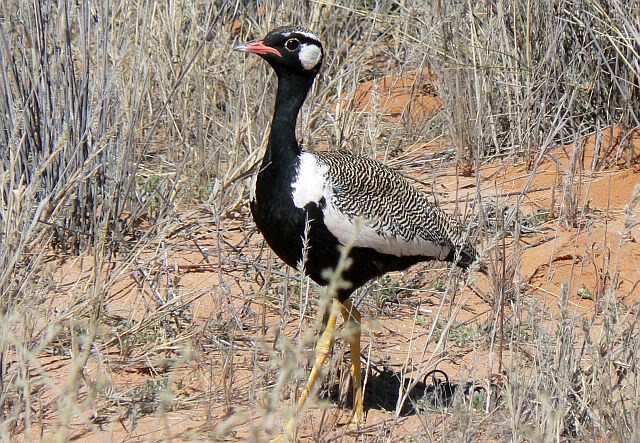 © Toko
© Toko © Duke
© Duke © nan
© nan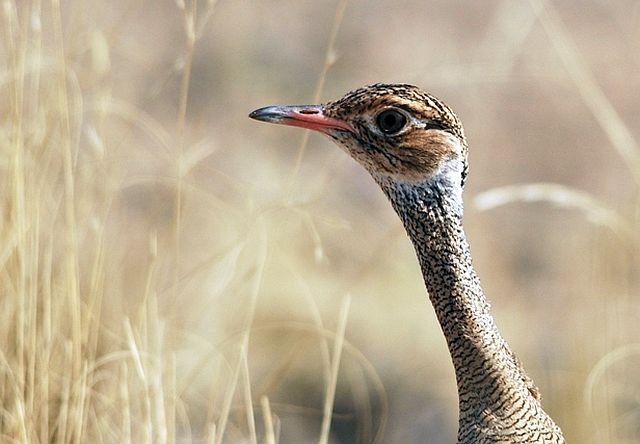 © Mel
© Mel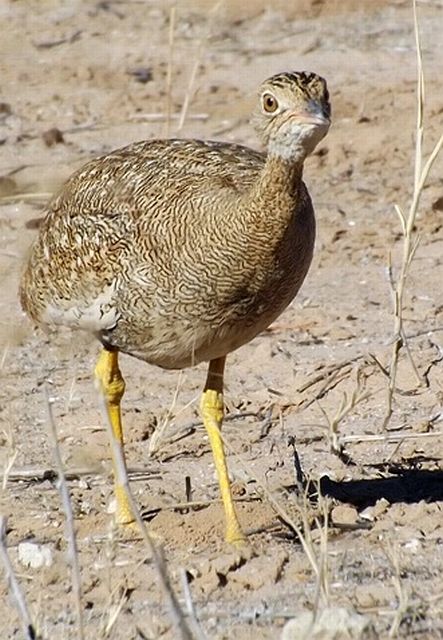 © pooky
© pooky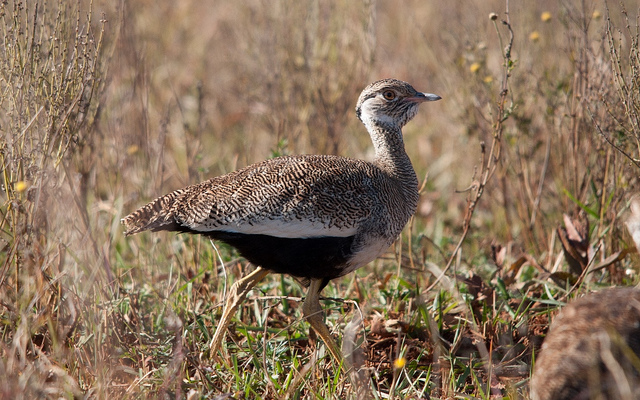 © Joan
© Joan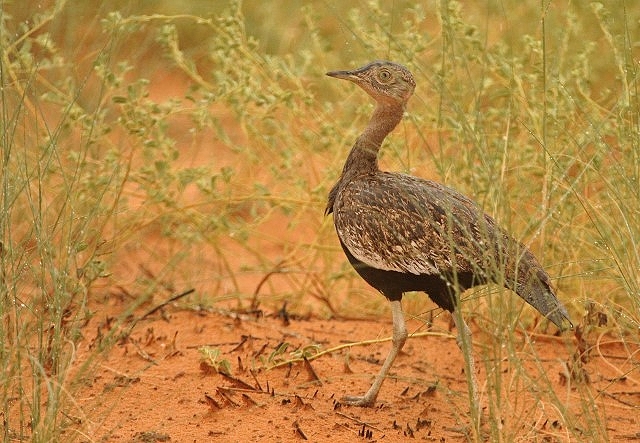 © nan
© nan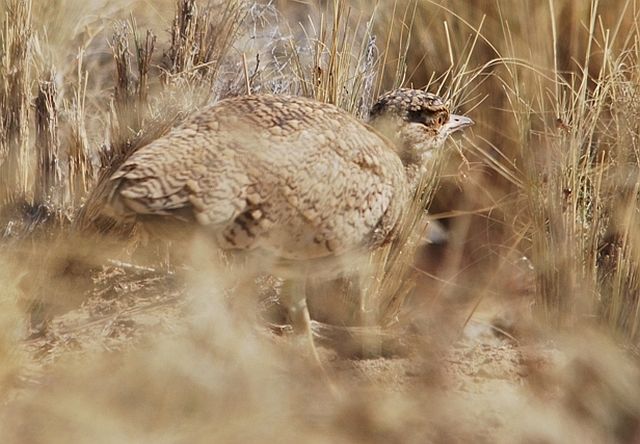 © Mel
© Mel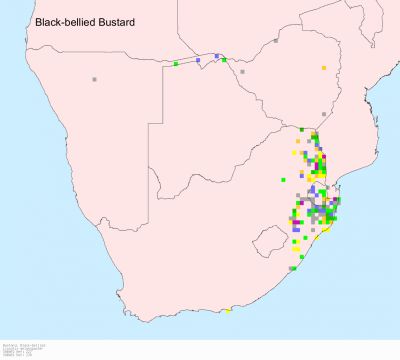
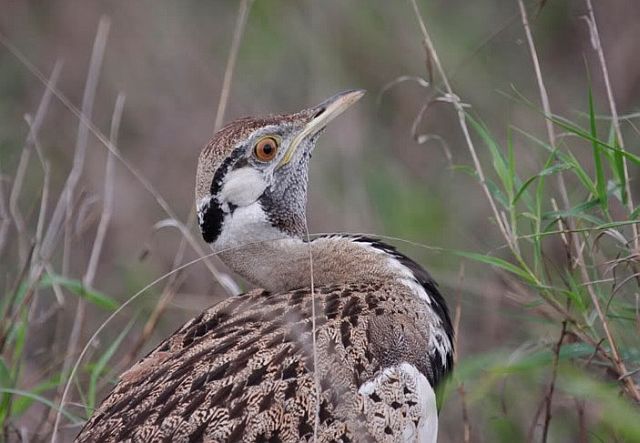 © leachy
© leachy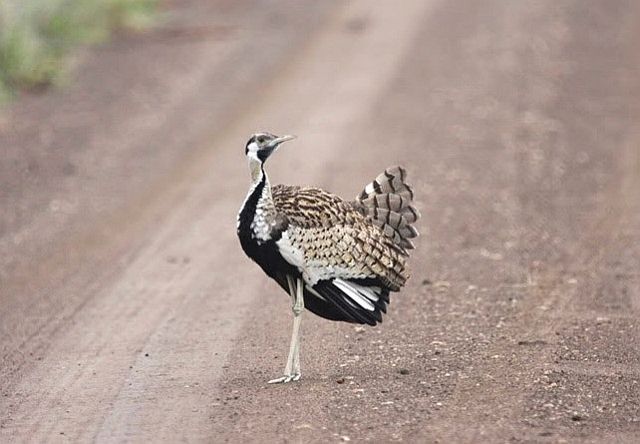 © leachy
© leachy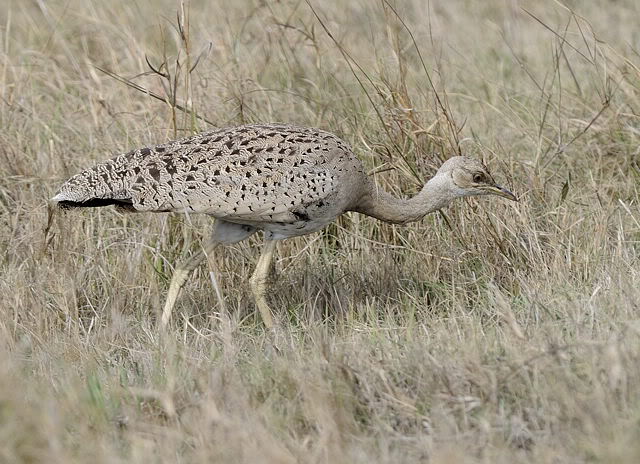 © Dewi
© Dewi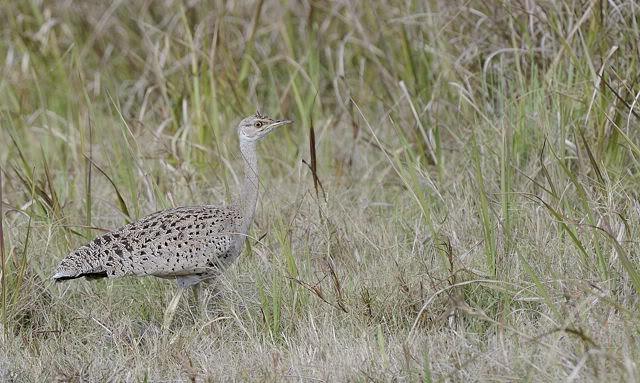 © Dewi
© Dewi © Pumbaa
© Pumbaa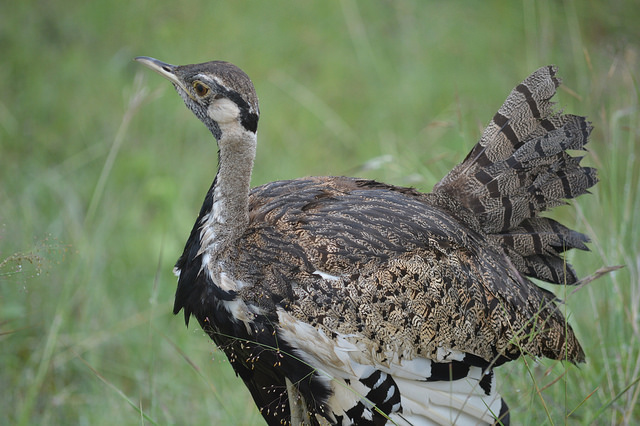 © Twigga
© Twigga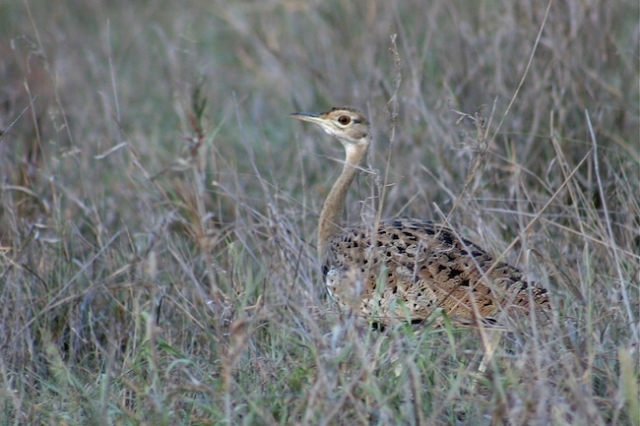 © ExFmem
© ExFmem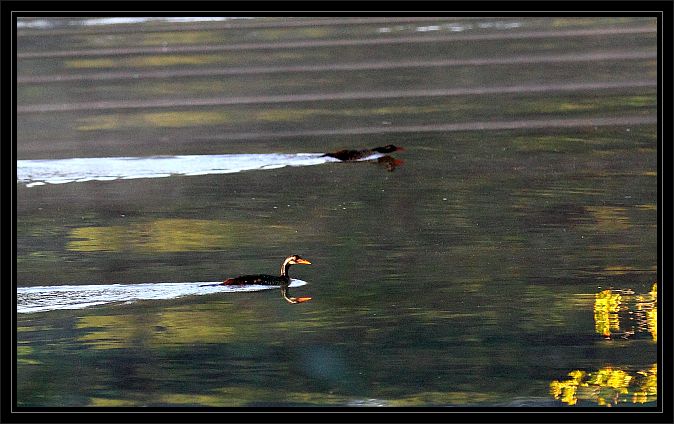 © Duke
© Duke